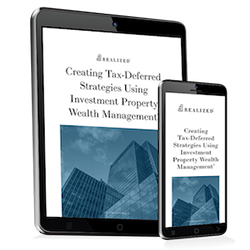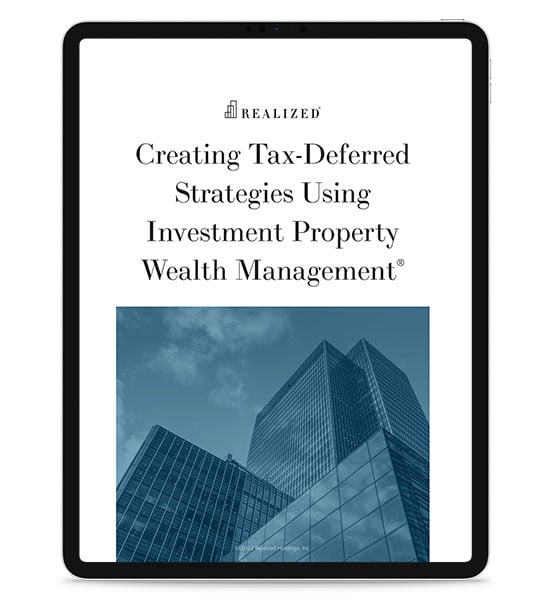
Most real estate investors are quite familiar with capital gains taxes – but you may be able to exclude this tax when selling your primary residence.
If you meet the following two requirements, you may be able to exempt up to $250,000 in capital gains taxes from the sale of your primary residence ($500,000 if married and filing jointly):
- You must have owned and used the home as your primary residence for at least two out of the five years preceding the sale.
- You also cannot have used the exclusion for another home sale within the past two years.
Let's look at the capital gains tax exemption and who qualifies for it.
History of Capital Gains Taxes and Current Capital Gains Tax Rates
Capital gains is a federal tax imposed by the Internal Revenue Service on profits generated from the sale of real property assets, land, stocks, or bonds. If you purchased any of these assets and then sold them after they realized an increase in value, you generated a capital gains tax liability.
The first capital gains tax was introduced in 1913. Initially, capital gains were taxed at the same rate regardless of how long you held an asset. However, in 1921 the tax was split into long-term and short-term gains. Capital gains are still classified as either long- or short-term gains. The IRS taxes short-term investments just like ordinary income, usually resulting in a higher rate than long-term capital gains tax rates -- the rate you’ll have to pay depends on your filing status and income level. Long-term capital gains, meanwhile, are taxed at 0, 15, or 20 percent.
The Tax Cuts and Jobs Act of 2017 was pivotal in allowing real estate investors to defer capital gains on the sale of real property by completing 1031 exchanges. The act eliminated assets such as collectibles and art, however. The Jobs Act also excluded any capital gains investors may realize from Opportunity Fund investments they have held for at least a decade, and it provided a partial exclusion for Opportunity Fund investments held between five and ten years.
When Do You Have to Pay Capital Gains Taxes?
In most cases, when you realize a fiscal gain on the sale of real property and similar big-ticket assets, you’ll have to pay a tax on any net sale proceeds above your initial cost basis plus any value-added capital improvements you might have made, such as new landscaping, flooring or mechanical systems for commercial properties, or big renovations for single-family investment properties.
Investors can manage this tax liability by choosing investments with longer holding times, which will drop their capital gains tax rate. Investors also can claim capital losses to offset years in which they have gains. Capital gains taxes are due on investors' tax returns for the year the property was sold.
When a person dies, their assets are transferred to their heirs. These assets include any property they own, such as a home or land. An heir would need to sell the asset in order to recognize a capital gain. Usually, the heir must pay capital gains tax on any increase in the property's value since its original purchase.
However, a special rule known as step-up in basis may apply upon the original owner's death. This rule allows the heirs to take the property's purchase price as its updated basis, stepping it up in value. This process effectively eliminates any capital gains tax that would have been owed. As a result, a step up in basis can be a valuable tool for minimizing taxes when transferring property to an heir.
Primary Residence Capital Gains Exclusion
In almost every instance, selling a commercial investment property for a profit will generate capital gains tax liability. However, that’s not the case when you sell your personal residence.
The Internal Revenue Service allows exclusions for capital gains made on the sale of primary residences. Homeowners who meet certain conditions can exclude gains up to $250,000 for single filers and $500,000 for married couples who file jointly. The IRS provides a comprehensive eligibility test for homeowners to determine if they qualify for a gain exclusion. While there are many different eligibility conditions, you must be able to check off these boxes:
- You owned the home for at least two of the last five years before the sale occurred, and used it as your primary residence for the same amount of time.
- The home was not acquired as part of a 1031 exchange.
- You haven’t claimed the capital gains exclusion on a different residence in the preceding two years.
There are ways investors can minimize their exposure to capital gains taxes. For example, completing a 1031 exchange by reinvesting the proceeds from the sale of an investment property into a like-kind replacement asset. However, the exchange process only defers capital gains liabilities -- those taxes will come due when you divest the replacement asset (unless you complete another 1031 exchange).
The Bottom Line
There are very few exceptions to the capital gains tax, and you may not qualify for a full exclusion of the capital gains tax on the sale of your primary residence. For instance, millions of Californians bought homes in the Greater San Francisco Bay Area in the 1960s, ’70s, and ’80s. Since those homes are now selling for prices well north of $1 million, capital gains taxes are likely to exceed the thresholds mentioned above. However, homeowners only have to pay taxes on capital gains that are greater than those quarter- and half-million-dollar amounts.
This material is for general information and educational purposes only. Information is based on data gathered from what we believe are reliable sources. It is not guaranteed as to accuracy, does not purport to be complete and is not intended to be used as a primary basis for investment decisions. It should also not be construed as advice meeting the particular investment needs of any investor.
Realized does not provide tax or legal advice. This material is not a substitute for seeking the advice of a qualified professional for your individual situation.
Costs associated with a 1031 transaction may impact investor's returns and may outweigh the tax benefits. An unfavorable tax ruling may cancel deferral of capital gains and result in immediate tax liabilities.



